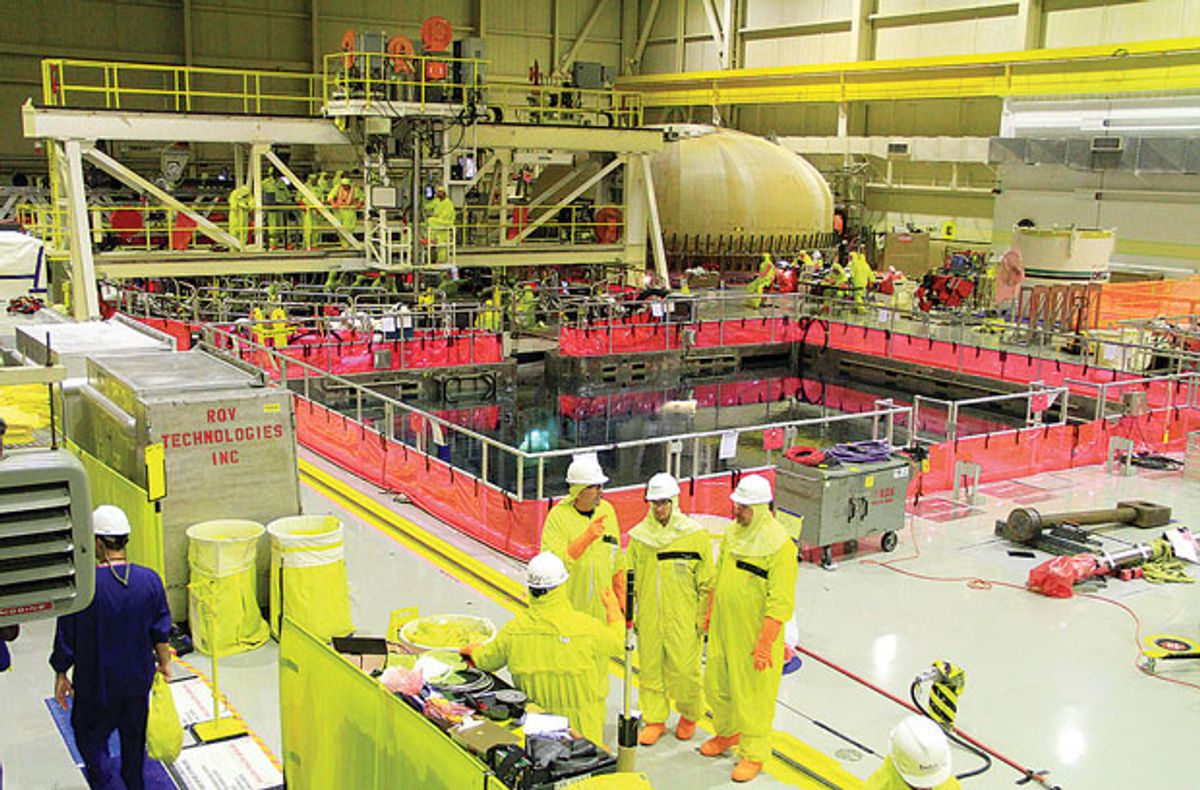U.S. nuclear power plant operators are fighting a war on two fronts: Crashing prices for natural gas and accelerating market penetration of renewable energy have both contributed to dramatic drops in wholesale power price levels—in some states, they’ve fallen by more than two-thirds over the past decade. This has left nuclear power, whose operating costs are pretty much fixed, with few options other than surrender.
That marks quite a reversal, says Gregory Jaczko, former chairman of the U.S. Nuclear Regulatory Commission. “It’s been a widely held belief that nuclear is incredibly cheap to operate. That was the case 10 years ago, when nuclear plants were cash cows. That’s not the case today, especially as the plants age,” he says.
Fission is already giving ground. Two plants, in Wisconsin and Vermont, shut down in 2013 and 2014, respectively. More shutdowns are anticipated in Massachusetts, New Jersey, and New York, and at least half a dozen more plants are teetering on the brink of insolvency.
Nuclear operators had been expecting President Obama’s Clean Power Plan, which would have established national carbon regulations and increased the cost of fossil-fuel-generated electricity, to offer them a reprieve. But their hope was short-lived: The U.S. Supreme Court decided in February to stay implementation of the plan.
Operators’ next best hope is that state governments will be motivated to step in and save them. State governments worry that substituting gas-fired generation for nuclear would, in the words of New York governor Andrew Cuomo, “eviscerate the emission reductions” achieved through state renewable energy programs. New York’s Public Service Commission projects that annual carbon emissions could rise by more than 12 million metric tons, working against a pledge to cut emissions by 40 percent of 1990 levels by 2030.
States are also voicing concerns over grid reliability and the potential loss of local jobs. The New York Independent System Operator recently projected that losing two threatened upstate reactors, operated by New Orleans–based Entergy Corp. and Chicago-based Exelon Corp., would help create a power supply deficit by 2019.
By June, state regulators plan to detail special payments for New York’s nuclear plants. For companies that open their books and show that their plants are losing money, New York is vowing to make them whole.
“It’s probably the stickiest energy policy question there is in the electric sector,” says Julien Dumoulin-Smith, a senior power markets analyst with New York City–based UBS Investment Research.
New York is not alone. Several states, including Illinois and Ohio, are seeking to give nuclear power plants an extra boost. Exelon lists the dual-reactor Quad Cities site in Illinois among its uncompetitive plants. Dumoulin-Smith says local power prices are being “pummeled” by wind power, noting that Quad Cities sits just across the border from Iowa, which leads the United States in wind power penetration.
Quad Cities, along with Exelon’s nine other reactors in Illinois, caught a break from regional grid operator PJM, which last year began offering more supplements to power plants that commit to staying in its energy market for several years, thus backstopping its power supply. Those Illinois plants raked in more than US $1.5 billion from PJM’s capacity market last September, ensuring that Quad Cities will remain in operation through mid-2018.
But experts say that tougher times could lie ahead, as the extension of tax breaks for wind and solar power voted through the U.S. Congress in December fuels further growth in renewable generation. New York’s program appears to anticipate this, positing that assistance to nuclear reactors is more of a temporary lifeline than a long-term guarantee. State aid is, according to a white paper from the N.Y. Public Service Commission, a means of supporting “a smooth emission-free transition from nuclear to nonnuclear resources” in the event that energy prices “are not able to support the continued financial viability of the [fission] plants.”
This article appears in the March 2016 print issue as “U.S. Fission Fizzles.”
